Happy New Year! Let’s start 2024 with a round of stories helping us connect with the environment and unveil our immense power to give back to the natural world. Recent work by photojournalists Michele Borzoni and Rocco Rorandelli comes in handy for this purpose, as the two photographers have won a grant from the Italian Sustainability Photo Award (ISPA) with their project portraying several Italian-based communities supporting the environment. We will then move to the Iberian Peninsula to explore possible ways of preventing catastrophic wildfires, to the West Bank to delve into some of the war repercussions on the environment and to the Nile Delta, where farming is increasingly threatened by sea level rise. Finally, we will briefly go back to COP28 and its outcomes before saying goodbye while flying — virtually — from southern Germany to Spain beside the bald ibis. Happy reading!

Building communities around nature conservation. Since Magma’s founding, there’s a question we often ask ourselves: How can we talk about climate change in a way that is not all doom and gloom and only generates eco-anxiety? With a similar question in mind, Michele Borzoni and Rocco Rorandelli from the collective of photojournalists TerraProject — after having long documented climate and environmental activists demanding to quit fossil fuels throughout Europe — thought to focus one of their latest projects on "a more constructive and solutions-oriented environmentalism."
Over the course of six months, Borzoni and Rorandelli traveled across Italy to photograph diverse groups and organizations devoted to the environment thanks to a grant from ISPA, a photo award dedicated to sustainability. The project they applied with resulted in “WE — Communities in Defense of the Environment,” which documents inspiring examples of communities that were built for nature conservation purposes.
An example of one such community is Driade, an Italian nonprofit that was established to raise funds for reforesting Mount Cairo, in central Italy, to counter land degradation and desertification after arson fires devastated the area in 2017 and 2020. Throughout the years, Driade has engaged people from all over Italy in its cause and has started taking care of the reforestation firsthand. Twenty to 150 volunteers usually take part in expeditions to collect seeds in the summer and to plant them in the fall. To date, volunteers have planted about 1.5 million seeds of pioneer trees and shrubs on more than 80 hectares of land.
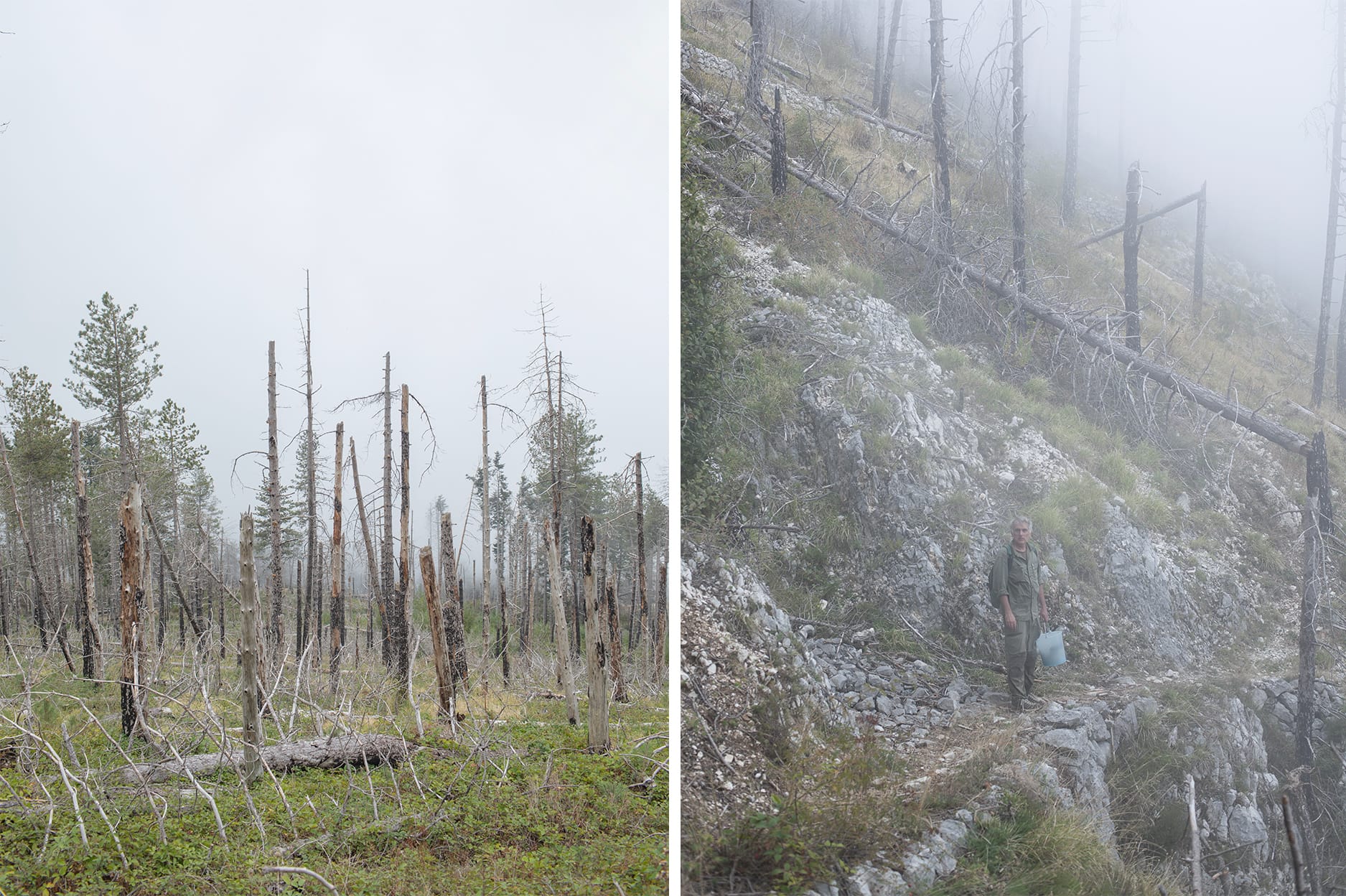
Danilo Mollicone (pictured above) is the scientific coordinator of such a reforestation. He is a forest ecologist working at FAO. "He knows the place; he knows tree varieties; he knows the ecology of the area," Rorandelli says. And he is careful "to recreate a forest biodiversity" and also mindful of the wildlife that lives there, including the Marsican brown bear. Not by chance, Driade's reforestation project has also garnered interest from the scientific community, especially since it uses seeds and not plants, which have higher costs.
The scientific community is among the subjects of Borzoni’s and Rorandelli’s project, including the Trento Science Museum MUSE and its research activities that keep track of climate change impacts on Alpine ecosystems and birdlife on several fronts.
Near Bocca di Caset, an Alpine pass, for instance, MUSE runs an ornithological station. There, researchers have turned wire nets that were once used for hunting into textile nets that are used to catch migratory birds. Researchers then band them and study their population as well as how climate change is affecting their migratory patterns.
"For many birds, climate change means, for example, a change in when migration begins," Rorandelli says. "There are also variations in the number of individuals belonging to a species over the seasons, which are therefore influenced by a changing climate. Some birds are more susceptible to a particularly mild winter, so the following spring, you will find fewer of them. But you may find other species that have become more abundant."
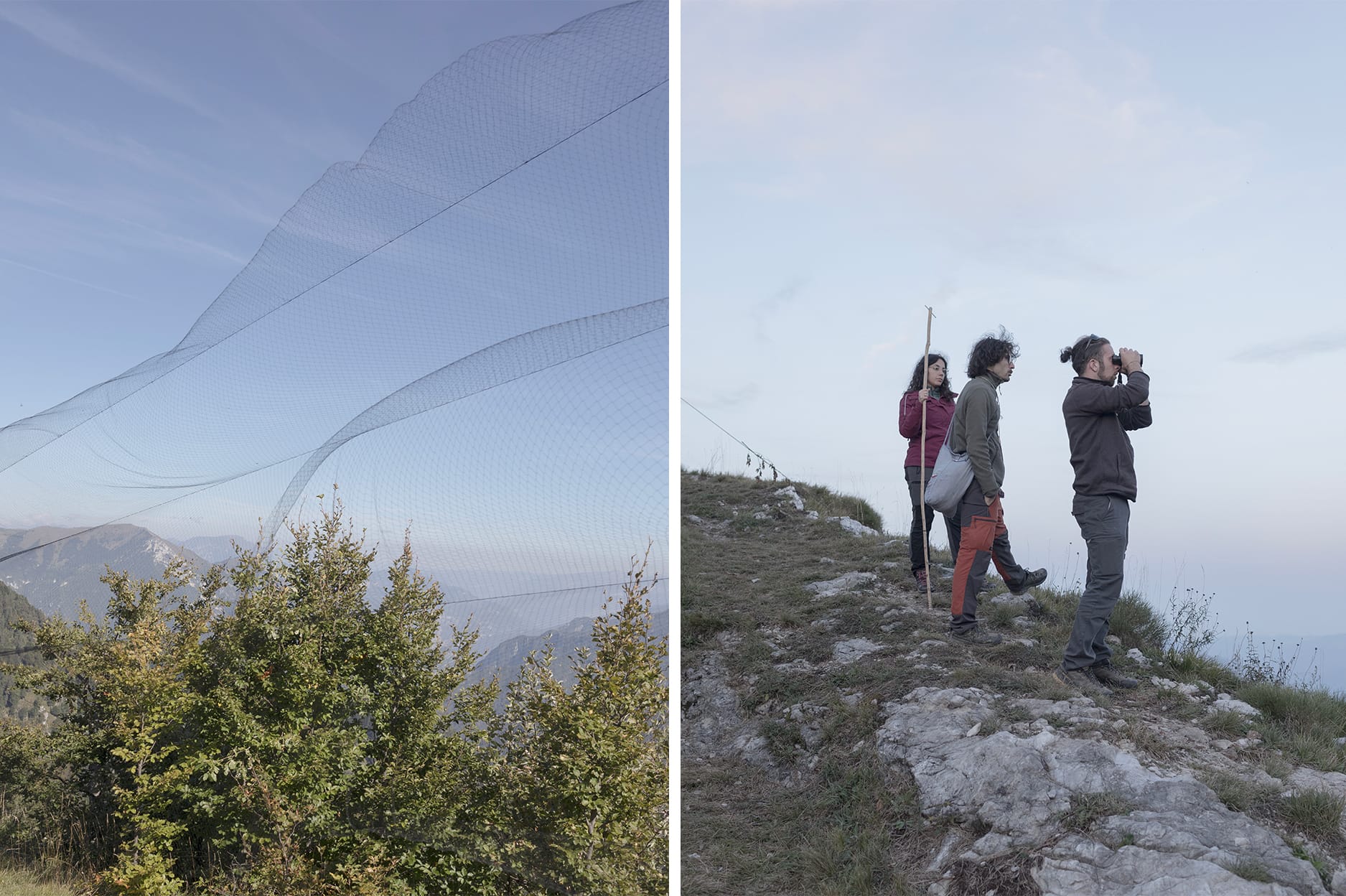
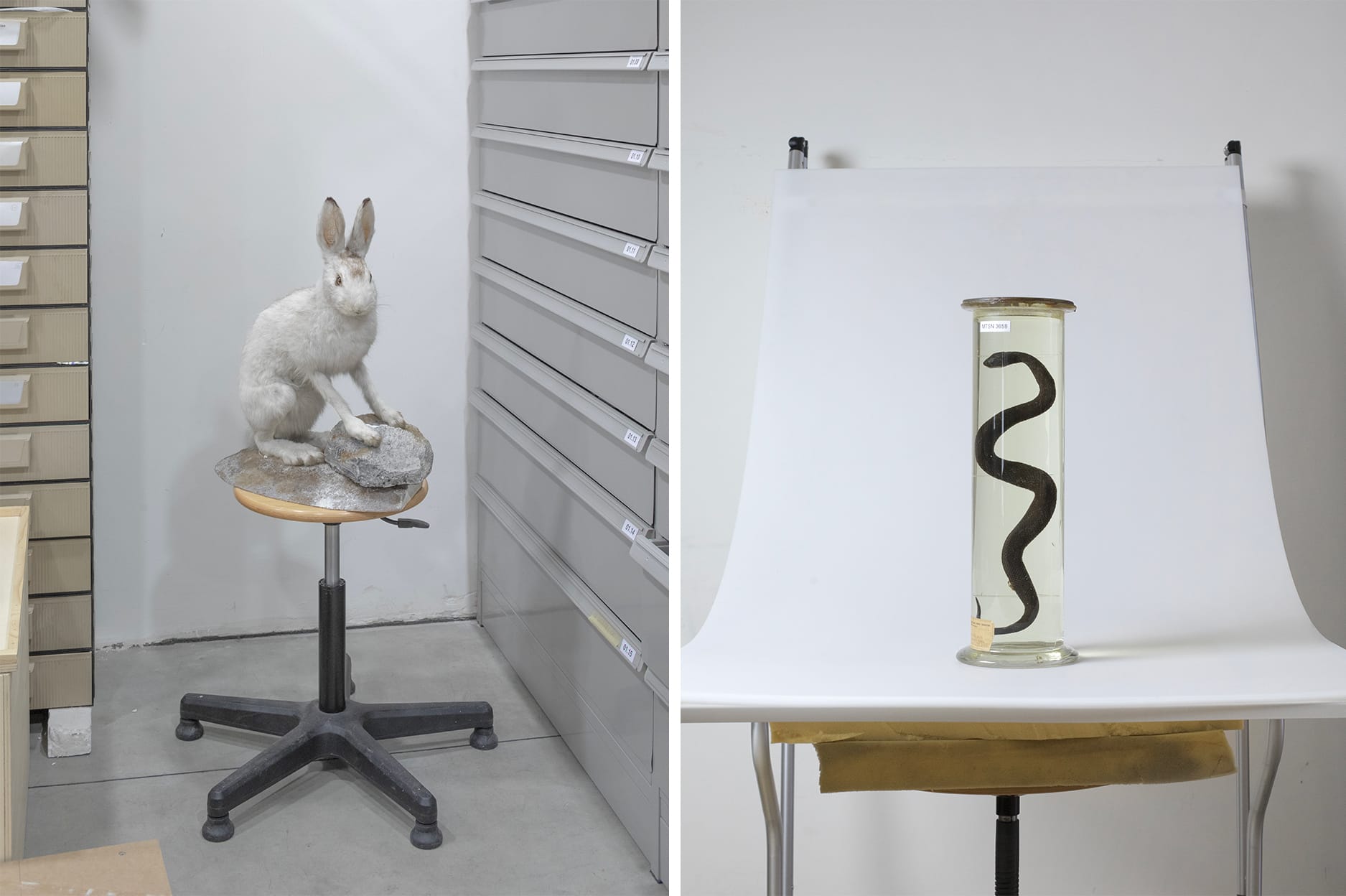
Going through MUSE collections — some dating back as far as nearly 200 years — it is also possible to get a glimpse of the major transformations Alpine ecosystems have experienced because of warming temperatures, including the increasing pressure mountain species are facing from other species. The adder, for example, used to be the only snake to be found up to 2,500 meters (8,200 feet) above sea level. But as temperatures increase, says Rorandelli, it finds itself coexisting with other vipers that are expanding their range. The same goes for the mountain hare, which is increasingly finding itself competing for food and other resources with the common hare in areas where it used to be the only hare able to survive.
But the “WE” project doesn’t only cover Alpine ecosystems, birdlife and reforestation. It focuses on agrobiodiversity, too. And it does that with a few snapshots, for example, of the temperature- and humidity-controlled area where the Florence-based nonprofit Rete Semi Rurali (The Rural Seeds Network) stores and preserves ancient varieties of seeds neglected by the agroindustry. The organization consists of various associations that promote the collective management of agrobiodiversity, aiming for greater diversification and opposing intensive monocultures and agriculture based on extractive logic.
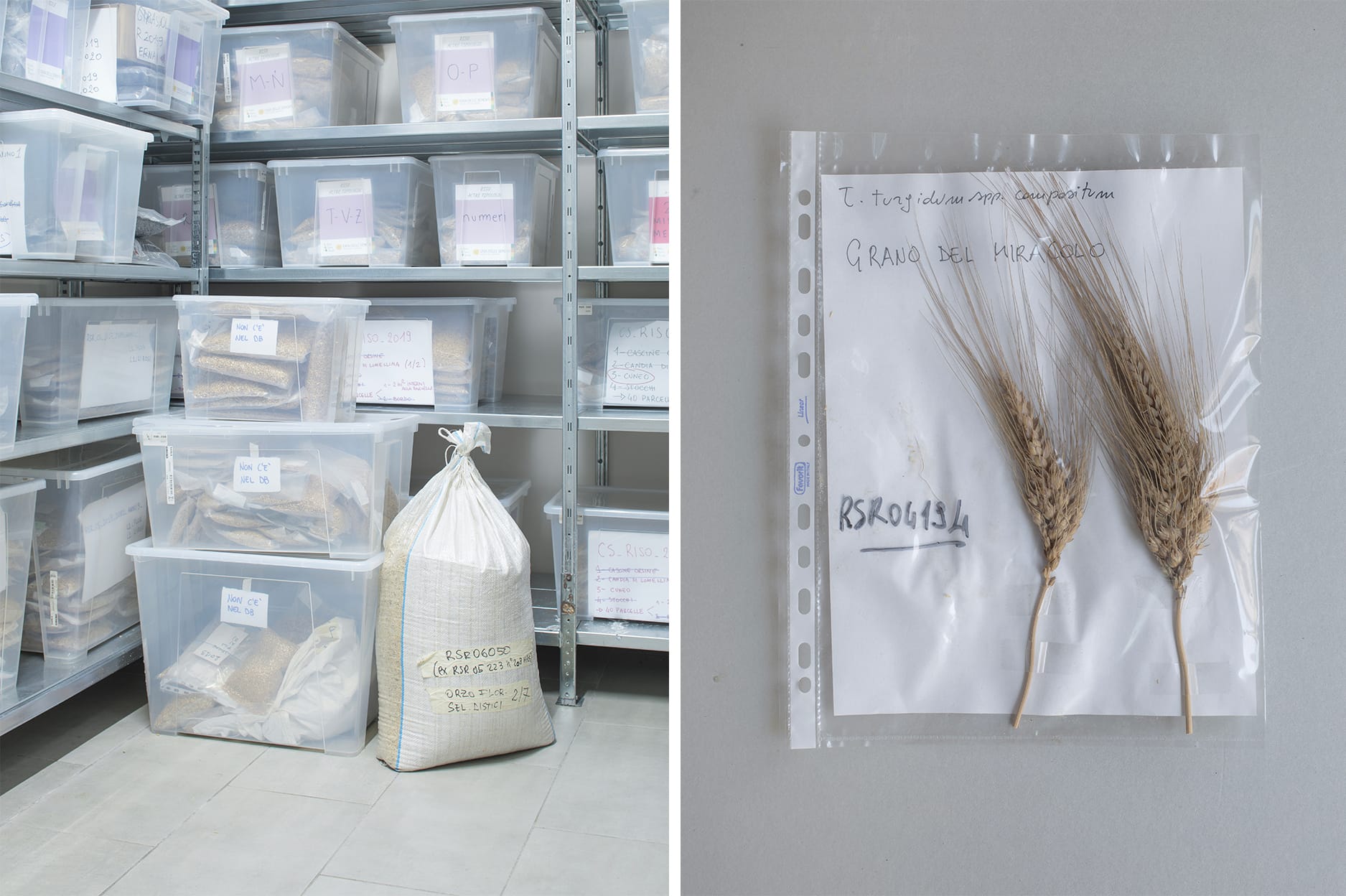
The photographers also documented other communities centered around agriculture — like Mondeggi, an occupied 200-hectare farm over the Florentine hills that had been abandoned for years — or the commons — like Poveglia per Tutti (Poveglia for All), a nonprofit that has prevented the privatization of a state-owned island in the Venice lagoon.
"It's awesome to see people bonding together, sharing ideas and doing something concrete," Borzoni says. “That’s why a section of the project is made of collective portraits which are visions of community."
The photographers have also documented a school in the woods, the Venice climate camp, anti-quarry activists defending the Apuane mountains and the Euro-Mediterranean Center on Climate Change. However, it’s been tough to include energy communities, Borzoni says, because legislation in Italy is still behind.
The result of this work has been welcomed by the award jury chaired by journalist and writer Mario Calabresi. "Michele Borzoni and Rocco Rorandelli's project tackles with clean and essential language a highly topical issue: How to live sustainably through collective and conscious choices," they wrote in a statement.
“The photographers traveled the Italian peninsula in search of virtuous experiences, active and courageous forms of commitment that often start from the bottom and become instruments of social growth," the jury also wrote. "A model of action that at the same time creates consciousness: We act together because the force of change is nourished by the relationships between individuals."

Preventing mega-fires on the Iberian Peninsula. Our very own Davide Mancini has long been covering Mediterranean wildfires. Two of his recent stories addressing forest fire prevention appeared on VoxEurop and Data Journalism Network. The first story is about the importance of biodiversity in preventing mega-fires and avoiding devastating ones like the one that affected Pedrogrão Grande, Portugal, in 2017. Industrial interests, in fact, have transformed Pedrogrão Grande over the years into an area with a high prevalence of eucalyptus trees, a species that burns particularly well (VoxEurop). In the second article, Davide explores how an ancient practice can serve to prevent fires with more catastrophic consequences (Data Journalism Network). But that's not all; Mancini is working on another story that will be published soon. Stay tuned!

Olive trees under siege. So far, the war on Gaza hasn’t been mentioned in this newsletter. But as The Guardian climate justice reporter Nina Lakhani wrote in the December 12 Down to Earth newsletter, quoting Francisco Vera, a 14-year-old Colombian activist who spoke up during a COP28 press briefing in Dubai: "If we want climate justice, we have to end war." War means diverting resources that could be used to address the climate crisis. But most of all, it means destruction, including of the natural world and its fruits. Or, as this Guardian video explains, it means more pollution and limited access to basic resources like water, as is the case for Palestinians living both in Gaza and the West Bank. And in the West Bank, the start of the war in Gaza has also coincided with a surge in violence by Israeli settlers and the Israeli army that has made olive harvesting virtually impossible, as journalist Marta Vidal reports in this Mongabay story. According to an estimate by the United Nations Office for the Coordination of Humanitarian Affairs from a few years ago, this crop is an important source of income for up to 100,000 Palestinian families in this area. And, as Vidal beautifully writes, for Palestinians, olive trees are "one of the most evocative symbols of resilience, and representative of a generational bond with the land."
Sea level rise threatens agriculture in the Nile Delta. The Nile Delta region has been cultivated for millennia and hosts more than half of Egypt’s agricultural land. But it now faces major threats from rising sea levels caused by climate change, journalist Eman Mounir reports. Farmers are leaving their land because salinity is degrading the soil and productivity is declining. In a two-part series, Mounir looks into the impact of sea level rise on the livelihood of local farmers in the Kafr El-Sheikh governorate and explores which adaptation projects have been planned to protect one of the most vulnerable areas to sea level rise in the Mediterranean (Muwatin).

COP28 key points. We asked Nathalie Hilmi — an environmental economics researcher at the Monaco Scientific Center and among the authors of the latest Intergovernmental Panel on Climate Change assessment report — for a comment on the 28th United Nations Climate Change Conference (COP28) that took place in Dubai between November 30 and December 12. Hilmi was a panelist in many sessions covering nature-based solutions and oceans. According to her, the conference “marked a significant turning point by addressing critical issues related to phasing out fossil fuels and transforming food systems.”
For the first time, a call for transitioning away from fossil fuels in energy systems was included in the final agreement. Commitments were also made to reduce methane emissions, and nearly 120 states pledged to triple global renewable energy capacity and double energy efficiency by 2030. In addition, more than 130 countries signed a declaration on sustainable agriculture, recognizing the pivotal role of food systems in global greenhouse gas emissions and committing to integrating agriculture and food systems into their climate action plans.
Another aspect Hilmi highlighted was the unprecedented focus on nature, and the ocean in particular, in COP28 negotiations. “The ocean’s crucial role received unprecedented acknowledgment,” Hilmi wrote in her post-conference write-up. “But concerns linger about potential misuse and the urgency of genuine emissions reduction efforts.”
Although COP28 will remain in history for marking an important step toward the end of fossil fuels, Hilmi also remarks that explicit adaptation actions still remain a significant challenge: “As nations look toward the next COPs, the need for translating pledges into concrete actions becomes paramount.”

Flying with the bald ibis — to save it, again. An Austrian conservation and research organization has been active in saving the bald ibis from extinction for years. At first, its population needed to grow from nearly zero after hunting decimated its numbers throughout Europe. But now the current 200 repopulated birds face a new threat: climate change, which is increasingly delaying their winter migration. Mild temperatures in autumn in fact make the ibis start its journey southward later and later, risking its life to the freezing air it may encounter on the Alps in late October or November. So the Waldrappteam, the Austrian organization, decided to teach young ibises a new, less perilous, route. And the past summer, they flew together over the Pyrenees (BBC Future).
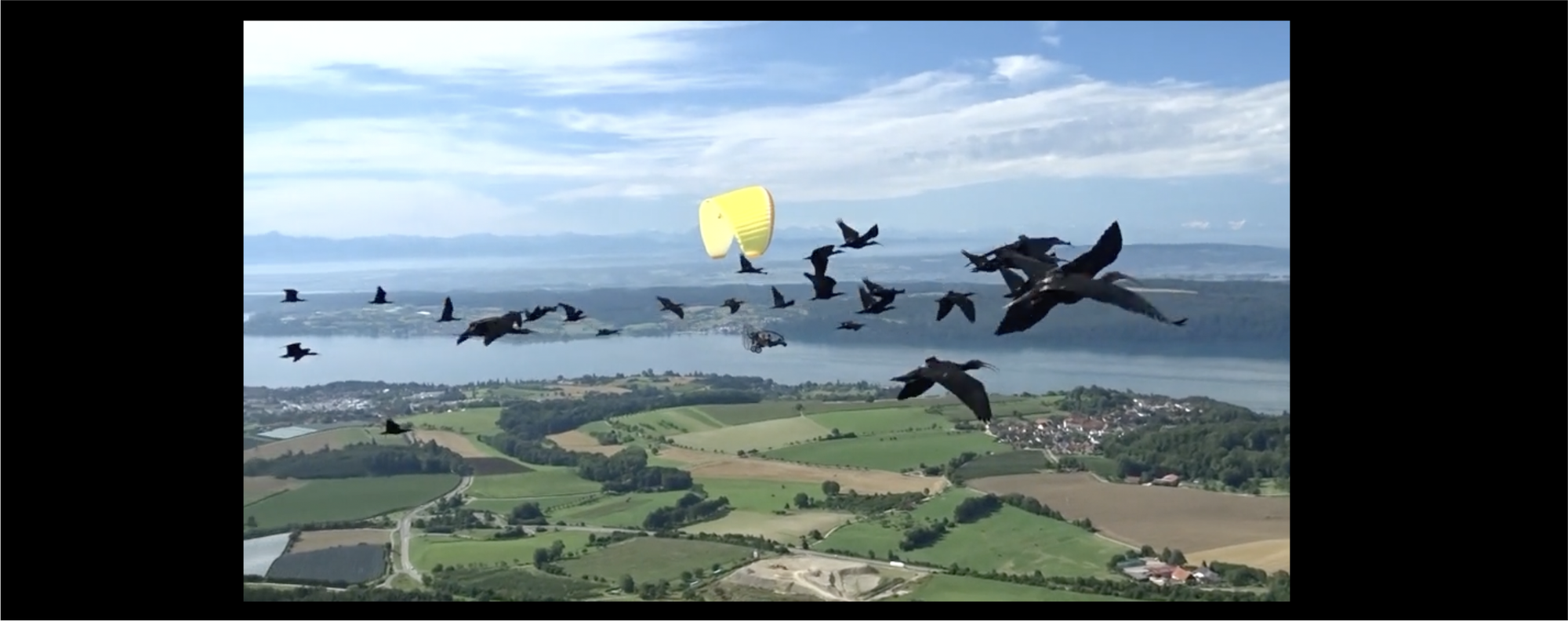
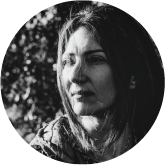
GUIA BAGGI
As an independent journalist, she writes about the environment, as well as the relationship between humans and their surroundings. In recent years, she has been focusing on the impacts of climate change and other environmental crises on the Mediterranean region. Building on this experience, she co-founded Magma.That's it for this month. Thank you for reading this far. See you in February or earlier with Lapilli+.
If this newsletter was forwarded to you, you can subscribe here to continue receiving it. Lapilli is free and always will be, but in case you would like to buy us a coffee or make a small donation, you can do so here. Thank you!
Lapilli is the newsletter that collects monthly news and insights on the environment and the Mediterranean, seen in the media and selected by Magma. Here you can read Magma's manifesto.

